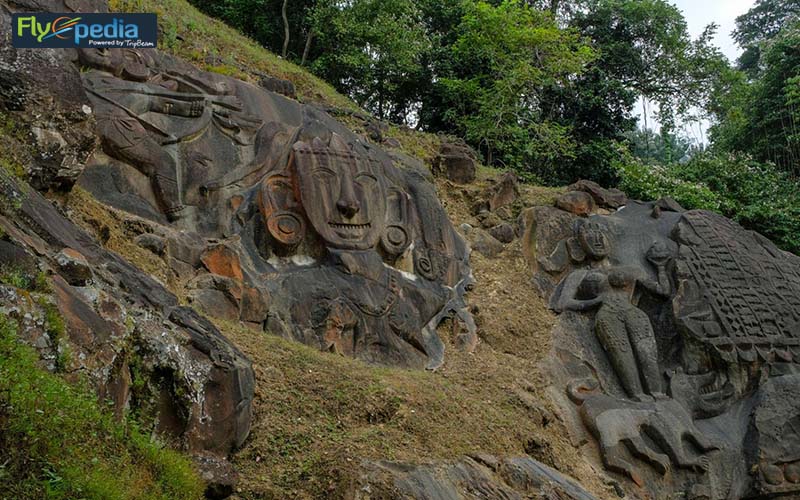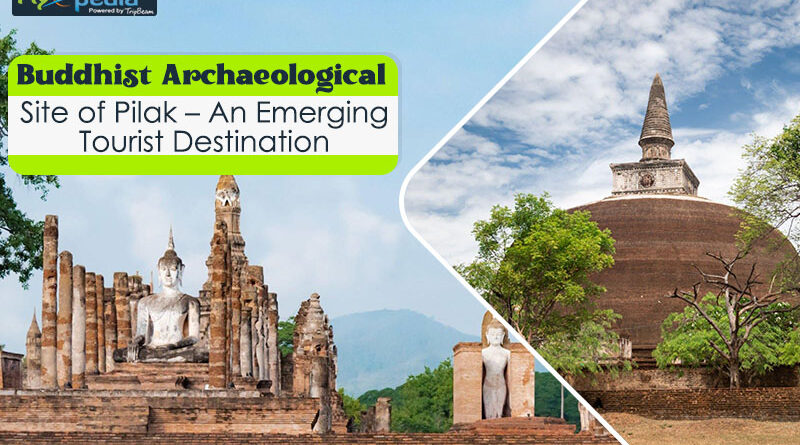Buddhist Archaeological Site of Pilak – An Emerging Tourist Destination
Tourists will soon be able to add yet more places to their itinerary for Tripura. The government of Tripura is constructing the Buddhist Archaeological Site of Pilak, a 1,000-year-old archaeological monument, as part of its new tourism circuit in an effort to draw in more visitors.
The Buddhist archaeological site of Pilak in Tripura offers a unique opportunity to see the work of earlier civilizations. Pilak has been the site of continuing excavations since 1927, yielding a steady stream of enigmatic and mystical items from the earliest dynasties in the northeast Indian region. The site’s extraordinary collection of Buddhist artifacts, including stupas, monastic relics, terracotta plaques, sculptures, and inscriptions, is particularly noteworthy.
In this article, we’ll cover all the necessary information about the Buddhist archaeological site of Pilak – an emerging tourist destination. Additionally, if mysterious artefacts and ancient pilgrimage sites are something that interests you, then get ready to book cheap air tickets to India from USA through Flyopedia and visit this magnificent Buddhist archaeological site.
Pilak: A Historic Site in Tripura

Pilak, located in Tripura’s Jolaibari area, is around 100 kilometers from Agartala. According to sources, the site has 200 to 300 daily visitors. Since 1927, a number of Buddhist and Hindu structures and images have been discovered here. Some of the items discovered there date from the eighth and twelfth centuries.
Along with other Hindu-Buddhist sites, Pilak can be found in the areas of East Bengal (now Bangladesh), Tripura, and Arakkan (Myanmar).
Starting in Agartala, a magnificent temple town in the state, the tourism route connects Pilak with Udaipur. The area is famous for the Tripureswari Kali temple, one of India’s shaktipeethas.
Intriguing Past of This Historical Place
Pilak had a tremendous impact on religious and cultural relations during the ninth and twelfth centuries. Buddhism significantly spread during the Middle Ages—not just in India, but also in the areas nearby. With its Buddhist stupas, monasteries, and places of pilgrimage, Pilak developed into a hub for philosophical and spiritual pursuits. Pilak witnessed the blending of religious and artistic styles from several dynasties due to its placement along important trade routes that connected India with Southeast Asia and other places, including the regions of Bengal and Bihar that were ruled by the Pala dynasty.
Today, the Indian government and heritage organizations actively preserve and protect the Pilak archaeological site, designated as a significant national historic site. Visitors flock to the Pilak archaeological site in Tripura, making it the most popular tourist destination for Buddhists in the region, eager to witness the wide variety of artifacts on display, which have been unearthed here. Thus, book the best business class flights to India from USA through Flyopedia and immerse yourself in the enigmatic history of Pilak.
Cultural Significance
The Pilak archaeological site in Tripura is very important culturally because of its historical, religious, and artistic significance. The area is a well-known Buddhist centre and has artifacts dating from the 8th to the 12th century, such as stupas, monastic ruins, and Buddhist statues. The site also has structures and sculptures that are dedicated to Hindu gods and deities, demonstrating the coexistence of Buddhism and Hinduism in the region at that time. The intricately carved clay sculptures and plaques unearthed in Pilak, which depict Buddhist tales, mythological settings, and everyday life, are a tribute to the artistic brilliance of the time.
Archaeological Discoveries
Beginning in 1927, excavations at the Pilak Buddhist archaeological site resulted in the recovery of numerous important Buddhist and Hindu artifacts. In the vast Pilak area, several archaeological discoveries have been unearthed that provide evidence of ancient culture, history, and traditions. Several noteworthy discoveries include the following:
- Pilak Stupa Complex
- Terracotta Plaques
- Buddhist Sculptures
- Votive Stupas
- Monastic Remains
- Friezes and Carvings
- Guardian Figures
Timeless Monuments and Significant Artworks
The enormous collection of Hindu and Buddhist sculptures and artifacts from the 8th to the 12th centuries can be found at the Pilak archaeological site in Tripura. The most significant discoveries include:
- Avalokiteshvara
- Buddhist Stupa
- Narasimha
- Bronze Statue of Buddha
- Surya and Other Deities
- Kinnar Figurines
- Mahishasura Mardini
Best Time to Visit and Timings
You can visit Pilak between the hours of 9:00 AM and 6:00 PM.
If you’re interested in archaeology, the best time to visit Tripura is from October to March, and the Pilak festival in December attracts Buddhist tourists from Nepal, Tibet, Japan, and other Southeast Asian countries. So, keep a close eye on the flight fare from USA to India, so that you can grab the cheapest flights.
Additional Nearby Tourist Places to Visit
Tripura is home to a variety of historical, religious, natural, and animal attractions. The following locations are close to the Buddhist archaeological site at Pilak:
- Chhabimura
- Tripureswari Kali Temple
- Rishyamukha
- Trishna Wildlife Sanctuary
- Jampui Hills
Therefore, the Buddhist Archaeological Site of Pilak, a wonderful treasury of spirituality and history, is poised to become a well-liked tourist destination. So, browse through Flyopedia today, the best online travel website to book last minute flight tickets to India and witness the serene ambiance of this majestic hidden gem. Also when looking for Canada to India flights, visit Flyopedia.ca for amazing deals.
Also Read: Experience the Illuminating Chittorgarh Fort All Around the Year




